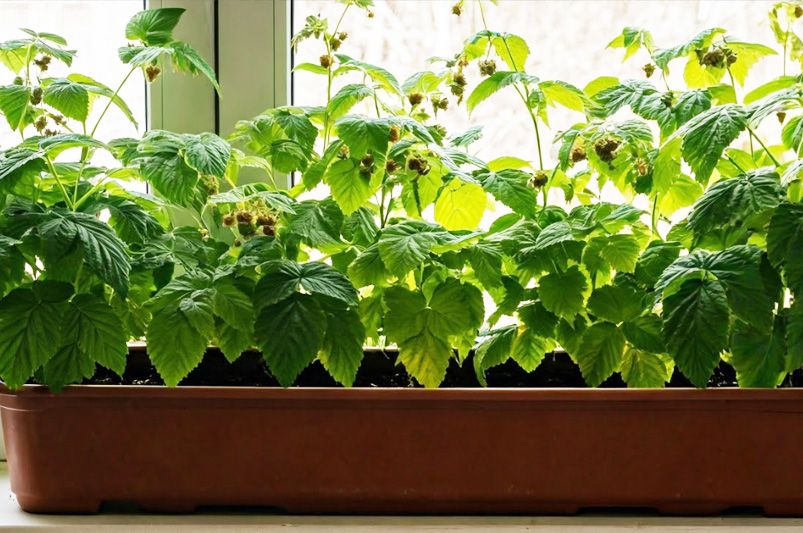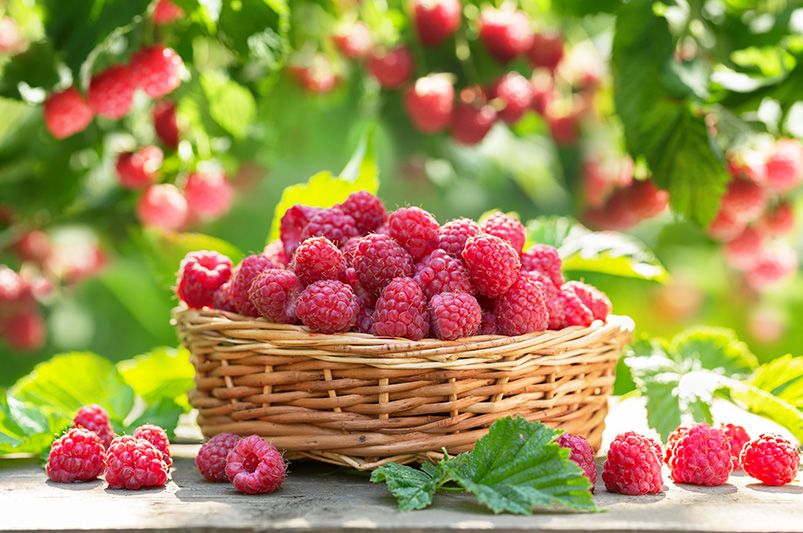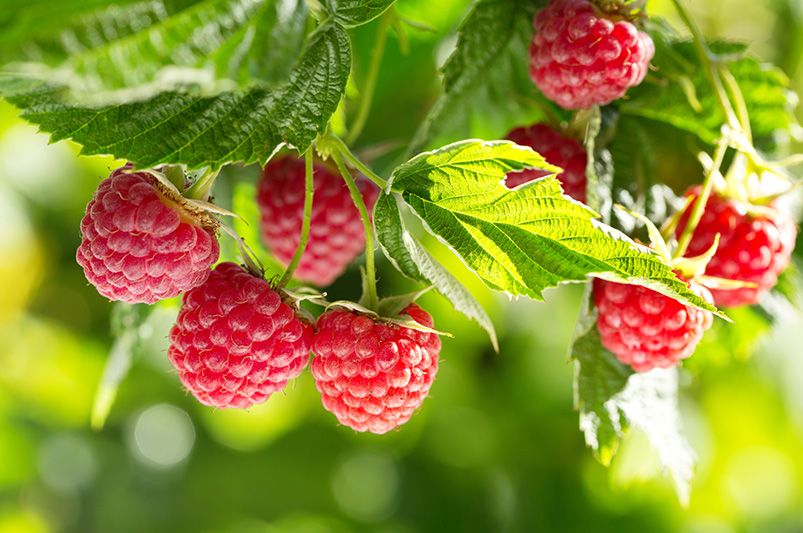
Beginner's Guide: Growing Raspberries in Containers Indoors
Published: 24/10/2024 | Updated: 24/10/2024
Key Highlights
- Enjoy fresh, homegrown raspberries all year round, even in colder climates.
- Container gardening offers control over growing conditions, crucial for successful raspberry cultivation.
- Select compact raspberry varieties specifically bred for containers and indoor environments.
- Provide adequate sunlight, well-draining soil, and consistent moisture for optimal plant health.
- Learn about pruning techniques to encourage vigorous cane growth and maximize fruit production.
Introduction
Imagine enjoying the sweet taste of fresh raspberries grown in your own home! Starting an indoor raspberry garden is simpler than you may believe, thanks to container gardening. If you have little outdoor space or want tasty berries all year round, this guide will give you the tips and tools you need. Get ready to enjoy the delicious berries you grow, no matter the season!


Why Grow Raspberries in Containers Indoors?
Growing raspberries in containers indoors is a great option for gardeners who have limited space or face harsh winters. When you bring your raspberry plants inside, you can control their environment. This helps you create the best growing conditions all year long. You won't have to worry about late frosts, the heat of summer, or unexpected weather changes.
A sunny location in your home, along with the right containers and care, can make a perfect indoor raspberry garden. With this method, you can enjoy fresh, homegrown raspberries no matter where you live or what the weather is like. This is a perfect choice for people living in cities, in apartments, or for those who just love fresh produce.
Benefits of Indoor Raspberry Gardening
One of the main benefits of growing raspberries indoors is that you can give them the best conditions to grow. You can make sure your plants get full sun for photosynthesis and fruit production, even in winter. By watching and adjusting the temperature, humidity, and how often you water, you help your plants grow healthy and have a good harvest.
Also, indoor raspberry plants are less likely to face pests and diseases that often hurt outdoor gardens. You can control infestations better, allowing you to use organic pest control methods and other preventive steps more easily.
Finally, having an indoor raspberry garden brings nature and beauty into your home. Just think of the joy in seeing your raspberry canes grow, bloom, and produce delicious berries right in front of you!
Challenges and How to Overcome Them
While growing raspberries indoors has many advantages, it's important to be aware of some challenges and how to handle them:
- Limited Space: Pick small raspberry varieties that work well in containers. Use vertical space by installing trellises or using hanging baskets to get more fruit.
- Indoor Pests: Check your plants often for any pests. You can bring in helpful insects or try organic pest control methods like insecticidal soap to stop any problems.
- Winter Care: In winter, make sure to give your plants enough light by using grow lights if necessary. Change how often you water as plants rest, making sure the soil doesn’t dry out completely.
By knowing these challenges and dealing with them ahead of time, you can have a successful indoor raspberry garden and enjoy fresh raspberries year after year.
Choosing the Right Raspberry Varieties for Containers
Selecting the right raspberry type for growing in containers is very important for success. Not all raspberries are the same, especially for growing indoors. Choose small types that are made for containers or those called dwarf raspberry varieties.
These plants are smaller and easier to grow, which makes them great for indoor areas. Some good options are 'Heritage,' which is flexible and can adapt well; 'Raspberry Shortcake,' a dwarf type that makes a lot of fruit; and 'Fallgold,' a yellow raspberry that has a special taste.
Best Varieties for Indoor Cultivation
When picking raspberry types for growing indoors, focus on those that do well in pots and controlled spaces. Compact and dwarf raspberry varieties are great options. They are easier to manage and often produce more fruit in small areas.
'Raspberry Shortcake' is a top pick among dwarf types. It gives many sweet, tasty berries. Its small size is perfect for pots or hanging baskets. Another good option is 'Fallgold.' This yellow raspberry is known for its special flavor and has a long fruiting time.
Think about each variety's traits, like when it fruits, how it tastes, and how well it can resist diseases. This will help you choose the best one for your indoor garden and your likes,

Understanding Raspberry Plant Characteristics
Raspberries are plants that live for many years. They give fruit every year. They grow as canes, which are the long, bending stems that come from the base of the plant. To help with pruning and getting more fruit, you should know the stages in how raspberry canes grow.
In the first year, raspberry canes work on growing strong and healthy. They focus on making their root systems and producing leaves. These canes are called primocanes. They usually do not bear fruit in their first year. Instead, they store energy for their second year.
In the second year, the primocanes turn into floricanes, which are the canes that will bear fruit. Floricanes produce flowers and then raspberries. After they fruit, these canes die. This allows space for new growth. To help your plants, remove the dead floricanes. This way, the new primocanes can grow well and keep producing fruit.
Essential Supplies for Starting Your Indoor Raspberry Garden
Before you start growing raspberries indoors, make sure you have these important supplies for great results:
- Containers: Pick pots that have adequate drainage holes. This helps avoid too much water. Go for larger pots that are at least 18 inches wide. This will fit the raspberry plant's root system well.
- Soil: You should use a good potting mix that drains well and is made for containers.
- Raspberry Plants: Choose healthy raspberry plants that do not have any diseases. Find these from good nurseries. Look for compact or dwarf types that are good for growing inside.
Selecting Containers for Raspberry Plants
Choosing the right containers is very important for your indoor raspberry garden. It’s best to use larger pots. Aim for pots that are at least 18 inches wide and 12 inches deep. This gives the raspberry plant enough space for its roots to grow.
Make sure the containers can drain well. This helps avoid waterlogged soil, which can cause root rot and other problems. Plastic pots are light and keep the moisture, while terracotta pots allow moisture to escape better. Just remember, terracotta may need more watering.
Think about using a large pot with wheels. This makes it easy to move your raspberry plants for the best sunlight. It also helps when you want to move your plants to a sheltered location during very hot or cold weather.
Soil, Fertilizer, and Other Growing Mediums
Using the right soil is crucial for healthy raspberry plant growth. Opt for a well-draining potting mix that is rich in organic matter. Avoid using garden soil, which can become compacted in containers and hinder drainage.
|
Element |
Description |
|
Potting mix |
Provides essential nutrients and structure |
|
Peat moss |
Improves soil acidity & moisture retention |
|
Perlite or vermiculite |
Enhances drainage |
|
Organic fertilizer |
Provides slow-release nutrients |
Raspberries benefit from a slightly acidic soil pH between 5.5 and 6.5. You can amend the potting mix with peat moss to increase acidity if needed. Regularly amend the soil with organic fertilizer to provide essential nutrients for optimal plant growth and fruit production.
Step-by-Step Guide to Planting and Caring for Raspberries Indoors

Now that you have picked your raspberry type, containers, and soil, it's time to start planting! Follow these simple steps to have a smooth and successful planting experience.
Keep in mind that good planting is just the beginning of growing a healthy indoor raspberry garden. Regular care and maintenance are very important. This includes watering, feeding, and trimming. If you take care of these things, you will enjoy lots of delicious berries.
Step 1: Preparing Your Container and Soil
Start by making sure your containers have drainage holes. If they don’t, drill or puncture some holes. This will stop water from building up and help roots grow well.
Next, prepare your potting mix. Mix equal parts of good potting soil, peat moss, and either perlite or vermiculite. Peat moss will make the soil more acidic, which raspberries like. The perlite or vermiculite will help with drainage. You can also add a little compost to give extra nutrients to the potting mix.
For more grit and better drainage, you might want to add some coarse sand or fine bark chips. Make sure to moisten the potting mix well before filling your containers. It should be damp, but not watery.
Step 2: Planting Your Raspberry Canes
Early spring is the best time to plant your raspberry canes. Start by carefully taking the raspberry plant out of its container. Make sure to loosen any roots that are circling.
Next, dig a hole in the center of your pot. The hole should be a little larger than the root ball of your raspberry plant. Place the plant in the hole so that the crown, where the roots meet the stem, is at the same level or a bit higher than the soil around it.
Fill the hole back in with potting mix. Firm the soil gently around the base of the plant. Be sure to water it well so that the roots settle into the soil. If you are planting more than one raspberry cane, keep them at least 2 feet apart. This gives them enough space for good air circulation and growth.
Step 3: Daily Care and Maintenance Tips
Once your raspberry plants are set in their pots, you need to care for them to help them grow well. It is important to keep the soil moist. Check the soil often. Water the plants when the top inch feels dry. Do not give them too much water because that can cause root rot.
Fertilize your raspberry plants every 4-6 weeks during the growing season. Use a balanced, organic fertilizer. This helps provide nutrients for healthy leaves and fruit production. You can also add organic matter like compost or aged manure around the plants. This helps improve soil health and keeps moisture levels up.
Keep an eye on your plants for any signs of pests or diseases. Act quickly if you see anything wrong to stop it from spreading. By being careful and caring for your plants, you will help your indoor raspberry garden thrive.
Step 4: Pollination, Fruiting, and Harvesting
Most raspberry varieties can pollinate themselves. However, you can help them produce more fruit. Gently shake the plants or use a small brush to move pollen from one flower to another.
Depending on which variety you choose, you might see fruit in the first or second year after planting. 'Autumn Bliss' is a well-liked variety. It is famous for its big harvests and late-summer fruit.
When your raspberries turn a bright red, gently pick them from the canes. You can eat them fresh, freeze them for later, or use them to make jam, pie, and other tasty dishes!
Conclusion
Growing raspberries indoors can be fun and rewarding. To get fresh berries at home, choose the right types and give them good care. Make sure to pick the right containers and keep the soil healthy. Have a regular care routine. With time and effort, your indoor raspberry garden can do well. Share your progress on social media to inspire other gardeners and swap tips for success. Have a great time gardening!
Frequently Asked Questions
How Often Should I Water My Indoor Raspberry Plants?
The amount you water depends on things like temperature, humidity, and how big the pot is. Usually, you should water your raspberry plants well when the top inch of soil is dry. It is important to avoid dry spells and also not to give too much water. Make sure there is good drainage to keep the moisture levels just right.
Need Assistance for a Complete Landscape Makeover?
Shrubhub’s landscape design packages can significantly transform the lives of homeowners by delivering customized, professional landscaping plans tailored to their unique space and personal style. With the ease of online collaboration, you are guided step-by-step through a design process that fundamentally reshapes your outdoor environment. The result is an aesthetically pleasing and functional outdoor living area that maximizes the potential of your property.


